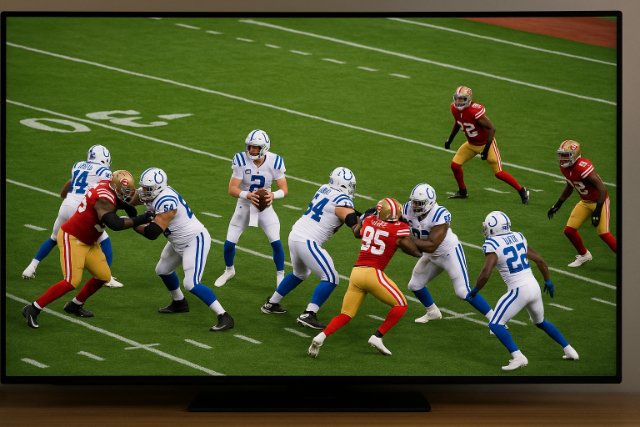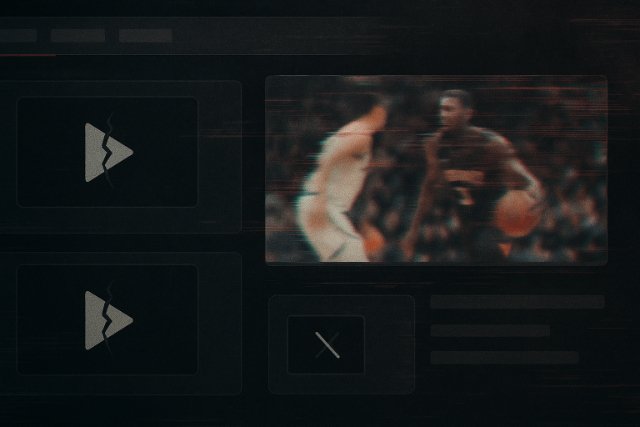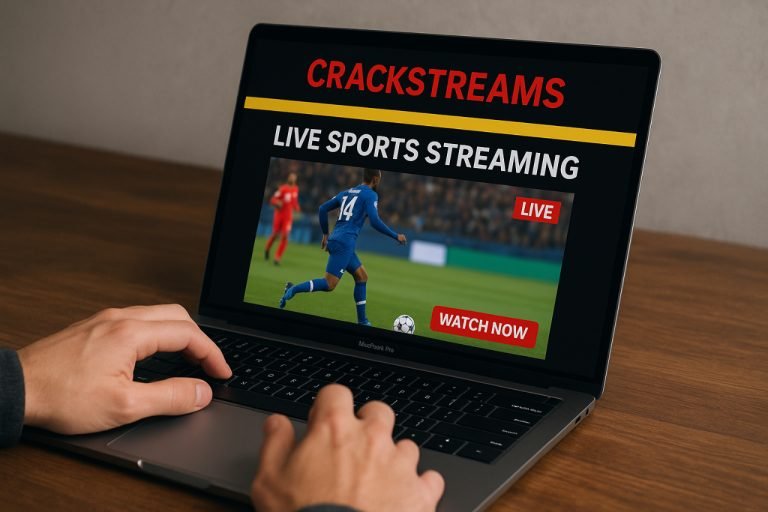Introduction
In today’s digital entertainment era, sports fans crave instant access to live events, from the adrenaline of UFC fights to the suspense of NBA playoffs or NFL Sunday games. With most official broadcasters hidden behind paywalls and costly subscriptions, many users began searching for free alternatives. One name that quickly rose to prominence was CrackStreams, a streaming platform that promised free, live access to popular sporting events.
CrackStreams became more than just a website; it evolved into a phenomenon within the sports streaming world. Its rapid popularity stemmed from its simplicity, no registration, no fees, and an impressive range of live content. Yet, beneath that convenience lay a complex web of copyright issues, frequent shutdowns, and serious user risks.
This article explores CrackStreams in depth, explaining how it worked, why it became so popular, the dangers involved, and the legal implications. It also examines the decline of the site, alternative options for sports streaming, and what the future of online sports broadcasting might look like.
Access a Live Event via CrackStreams

Accessing live events on CrackStreams was straightforward, which explains much of its popularity. The platform’s main interface typically listed various sports categories such as NFL, NBA, MMA, Boxing, UFC, and Formula 1. Each category featured links to ongoing or upcoming events. With a simple click, viewers could start watching without needing an account or payment method.
The ease of access created an illusion of legitimacy. To an average user, the process looked harmless: find the link, click play, and enjoy the game. Streams were hosted on embedded players directly in the browser, so there was no need to download software. Users loved that the website didn’t require any setup, making it a go-to source for spontaneous sports viewing.
However, the simplicity of CrackStreams also concealed its unstable nature. The streams were not hosted on the site itself but were pulled from external servers around the world. This made the quality of the feed inconsistent, often fluctuating between high-definition and poor-quality video depending on server stability. In addition, many users had to navigate through pop-ups and deceptive advertisements before reaching the stream.
For those with limited access to paid broadcasters or living in regions where events were not televised, CrackStreams felt like a lifeline. But beneath that convenience was a gray market system operating outside the law, and that instability was built into its foundation.
Identify the Domain and Mirror Structure
One of the most confusing aspects for users was finding the real CrackStreams site. Since the platform frequently faced shutdowns, countless mirror sites and clones appeared. These mirrors often had similar domain names such as crackstreams.io, crackstreams.ch, crackstreams.ws, or crackstreams.cx. Each one claimed to be the original, yet few were legitimate or safe.
This constant cycle of domain takedowns and reappearances became part of CrackStreams’ identity. Whenever the main domain was seized or blocked, operators or opportunistic imitators would launch new versions under slightly altered names. When one site disappeared, another might pop up within days, copying the exact design and functionality of the original.
For users, this created uncertainty and risk. Some mirror sites were harmless imitations aiming to keep the service alive, but others were riddled with malicious ads, hidden trackers, or phishing traps. The decentralized and chaotic mirror ecosystem meant users never truly knew who controlled the site they were visiting.
This mirror network reflected the underlying instability of unauthorized streaming services. No single operator could maintain a long-term presence because of constant legal pressure. As a result, CrackStreams became a brand rather than a single entity, a shifting collection of domains trying to survive in a cat-and-mouse game with copyright enforcement agencies.
Recognize the Legality and Copyright Risk
The biggest issue surrounding CrackStreams is legality. While it offered access to major sports broadcasts, it did so without holding any broadcasting rights or licenses. The platform essentially redistributed live sports feeds that were intended to be paid content. This violated copyright and broadcasting regulations in most countries.
From a legal standpoint, hosting or distributing copyrighted material without authorization is a clear infringement. But even viewers who only watched streams could face consequences depending on their jurisdiction. In many regions, knowingly accessing pirated streams is considered a civil or even criminal offense. While casual users are rarely prosecuted, the risk technically exists.
Beyond the legal danger, CrackStreams undermined the economic structure of sports broadcasting. Networks invest heavily in securing exclusive rights, often paying millions for a single season. Unauthorized platforms like CrackStreams siphon viewership away from legitimate broadcasters, impacting revenues that fund teams, athletes, and event production.
Law enforcement agencies and anti-piracy groups have been cracking down on such operations, shutting down servers and freezing domains. Yet because the operators often remain anonymous and dispersed across different countries, enforcement is a never-ending battle.
For everyday users, the key takeaway is simple: using CrackStreams may seem harmless, but it places you in a legally ambiguous position and contributes to the larger issue of content piracy that affects the sports industry globally.
Assess Safety and Security Risks
Even if legal risks feel remote, the security risks of CrackStreams are immediate and serious. Because it is not a legitimate or regulated platform, users have no guarantees about what code, ads, or trackers are embedded within the site.
Malicious advertisements are one of the most common threats. Many users reported encountering pop-ups that redirected them to gambling websites, adult content, or fake software downloads. Some of these links contained malware designed to steal data or infect computers with viruses. Since these sites are not held to any cybersecurity standards, there’s no oversight to protect users.
Another major risk is the exposure of personal information. When visiting CrackStreams without protection, your IP address, device details, and browsing habits can be logged. This data may be sold to advertisers or misused by third parties. In the worst cases, visiting fake mirrors could lead to phishing attempts that mimic login screens for streaming services or payment systems, tricking users into entering credentials.
Additionally, users risk unstable streaming quality and technical failures. Streams often lag, buffer, or cut out entirely during peak moments. Because the servers hosting these streams operate without robust infrastructure, performance is inconsistent at best.
In short, every time a viewer uses CrackStreams, they gamble with their security. The absence of regulation and oversight turns convenience into a significant vulnerability.
Track the Decline and Shutdown of CrackStreams

CrackStreams’ downfall was inevitable. Its popularity drew immense attention not just from fans but also from media companies and law enforcement agencies. Over time, increased pressure led to repeated domain seizures and shutdowns.
The site’s pattern became predictable. It would go offline, resurface under a new domain, gain traction, and then vanish again. This cycle eroded user trust and made it increasingly difficult for fans to find reliable access. As each version disappeared, clone sites would pop up, some run by opportunists looking to profit from the name’s reputation.
The decline also reflected a broader shift in the online ecosystem. Anti-piracy technologies have improved significantly. Search engines, ISPs, and social media platforms now collaborate to block or limit access to known infringing sites. Many users found themselves unable to access CrackStreams even when mirror links were live, as their networks automatically filtered or redirected those addresses.
The once-thriving community that revolved around CrackStreams began migrating to alternative sites or legitimate streaming platforms. By the time of its most recent shutdowns, the original domain was essentially gone, replaced by a dozen inconsistent clones. What was once a dominant force in free sports streaming faded into a digital shadow of its former self.
Compare 10 Alternatives to CrackStreams
After the decline of CrackStreams, viewers turned to both free and paid alternatives to fill the void. Some sought out similar unlicensed services, while others opted for legitimate platforms that guaranteed better quality and safety.
Unofficial alternatives like BuffStreams, StreamEast, and MethStreams offered similar access models. They required no payment, provided links to multiple sports categories, and attempted to mirror the CrackStreams experience.
However, these sites carry the same risks such as unstable links, intrusive ads, and potential legal consequences.
On the other hand, legitimate options like ESPN+, FuboTV, DAZN, and YouTube TV provide official access to licensed content. While they require subscriptions, they offer consistent streaming quality, HD resolutions, and full legal compliance. Moreover, they support the industry by ensuring that athletes, broadcasters, and production crews are compensated for their work.
Users seeking a middle ground often turn to ad-supported legal services like Pluto TV or Tubi, which broadcast some sports and replays at no cost. Although they don’t feature live pay-per-view events, they provide a safe, regulated environment that doesn’t compromise privacy or device security.
Ultimately, the best alternative depends on what a viewer values most, free access at personal risk or paid access with guaranteed quality and legality.
Minimize Risk: Best Practices and Precautions
For those who still explore unauthorized streaming, understanding how to minimize risks is crucial. The first and most important precaution is to use a Virtual Private Network, or VPN. A VPN masks your IP address, encrypts your data, and adds a layer of anonymity. It doesn’t make illegal activity legal, but it helps protect your privacy online.
Next, use a secure browser with pop-up blocking and script-control extensions like uBlock Origin or Privacy Badger. Avoid clicking any pop-ups or Play buttons that appear suspicious or redirect to new tabs. Many of these are designed to install unwanted software or collect personal information.
Having reliable antivirus software running in real time can prevent infections from malicious downloads. Regularly clearing browser caches and cookies also helps reduce tracking exposure. Most importantly, never provide any personal or financial information to streaming sites, because legitimate services never ask for details on free streams.
Lastly, always remember that prevention is the best protection. Even with all these tools, using unauthorized platforms carries inherent risks. The safest approach remains using licensed, trusted services that prioritize user safety and data protection.
Understand the Motivations and Demand
The explosive popularity of CrackStreams didn’t happen by accident. It was fueled by real frustrations among sports fans worldwide. Rising subscription costs, regional blackouts, and fragmented sports rights have made it difficult for viewers to access the content they love.
In many countries, sports rights are split among multiple broadcasters, forcing fans to subscribe to several services just to follow their favorite leagues. CrackStreams solved this problem in one stroke by aggregating everything into a single free platform. For fans, this wasn’t just about avoiding costs; it was about convenience and accessibility.
There’s also a global accessibility issue. Many sports leagues restrict broadcasts to certain regions. For fans in countries without official coverage, unauthorized streaming is often the only way to watch their teams in real time. CrackStreams filled that gap, giving fans a sense of inclusion in the global sports community.
The demand was so strong because CrackStreams offered a user experience that legitimate platforms often fail to provide: one click, no barriers, instant access. This level of simplicity is something many official services could learn from, because convenience, in the end, is what keeps viewers engaged.
Evaluate the Ethical and Cultural Dimensions
Beyond legality, CrackStreams raises ethical questions about fairness, access, and digital responsibility. Supporters of free streaming argue that fans should not be denied access to live sports simply because they cannot afford premium subscriptions. They see CrackStreams as a form of digital protest against over-commercialization.
However, from an ethical standpoint, unauthorized streaming undermines the ecosystem that supports sports as an industry. Broadcasting networks invest heavily to secure and deliver content. Teams rely on these revenues to pay players, develop talent, and sustain operations. When viewership shifts to free, unlicensed sites, it erodes that financial structure.
There’s also the issue of safety ethics. Users often underestimate the potential harm to their devices or data. Encouraging such platforms indirectly normalizes risky behavior online. This desensitization to piracy can lead to a culture where data theft, malware exposure, and privacy violations become accepted trade-offs.
The CrackStreams debate ultimately highlights a moral gray zone, accessibility versus sustainability. While everyone wants open access to content, it must be balanced with respect for the creators, athletes, and organizations that make sports possible.
Monitor the Future: Trends and What to Expect
The future of platforms like CrackStreams will likely follow a familiar cycle of reappearances, shutdowns, and constant cat-and-mouse chases with regulators. As technology evolves, so will enforcement. Governments are introducing stricter laws targeting both operators and users of unauthorized streaming services.
At the same time, legitimate broadcasters are recognizing the demand for more flexible and affordable streaming options. Expect to see the rise of micro-subscriptions, allowing users to pay only for specific sports or events instead of committing to expensive annual packages.
There’s also growing interest in decentralized streaming technologies, where users share bandwidth to distribute live content peer-to-peer. While this could make enforcement harder, it also opens new possibilities for legal, community-driven streaming platforms.
In the long term, the most sustainable solution will come from innovation in accessibility. If official broadcasters embrace global, affordable, and user-friendly models, the appeal of illicit sites like CrackStreams will continue to decline. The goal should be to make legitimate access so seamless and affordable that piracy loses its allure entirely.
Conclusion
CrackStreams was both a revolution and a warning. It showed the enormous global demand for accessible sports streaming, but it also exposed the risks and legal challenges of operating outside the system. What began as a simple way for fans to watch games for free evolved into a worldwide network of mirrors, clones, and controversies.
Today, CrackStreams serves as a lesson in the economics of attention and accessibility. It proved that audiences crave convenience above all else, but also that sustainability requires legality and security.
For users, the best takeaway is to be cautious, informed, and ethical in how you access online content. The short-term thrill of a free stream can lead to long-term risks, from data breaches to malware infections and legal issues.
In a rapidly changing media landscape, the future will belong to platforms that combine ease of use with fairness and transparency. CrackStreams might fade from memory, but the debate it sparked about digital access and affordability is far from over.
Explore more insightful and valuable content on our blog VeoTag.com! Stay updated with helpful tips, expert advice, and in-depth articles that enhance your knowledge.
Read Also:
1. Trade Value Chart: Accurately Determine Your Car’s
2. Scooped Bagel: The Complete Guide to Making, Ordering
3. vyvymanga: Everything You Need to Know About the Manga Platform
4. ALDI Weekly Ad: Deals & Flyer Guide
5. kiddle: The Safe Search Engine That Makes the Web Kid-Friendly
FAQ’s
Not reliably. The original domains have been shut down, and most current versions are clones or mirrors that come and go frequently.
Yes, in most regions it violates copyright laws. While users are rarely prosecuted, the act remains unlawful and risky.
Yes. Many mirror sites contain malware, adware, or phishing schemes that can compromise personal data or system security.
Platforms like ESPN+, FuboTV, DAZN, and YouTube TV offer legal, high-quality streams for various sports, though they require payment.
Mostly for cost-free access and convenience. Many users cannot afford multiple sports subscriptions, so they turn to free but risky options.
Unlikely. Legal pressures make long-term operation impossible. New mirrors may appear, but they are unstable and unsafe.

